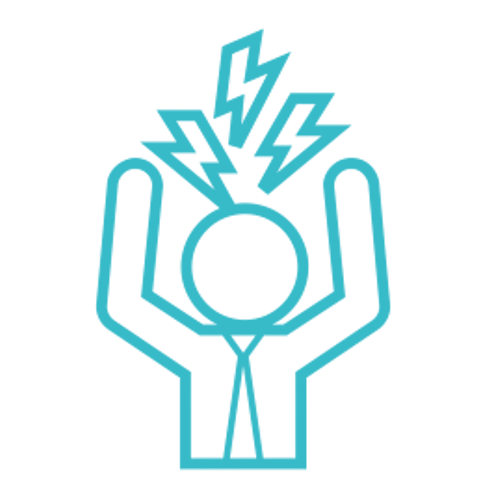Have you ever experienced a traumatic event that left you feeling lost, vulnerable, or overwhelmed? Trauma can shake us to our core, making us feel like we’ve lost our sense of safety and security. But here’s the thing: you don’t have to navigate this journey alone. In this blog post, we’ll explore practical strategies for reclaiming your sense of safety and transforming trauma into healing.
Understanding the 6 Common Trauma Responses
When it comes to trauma responses, our minds and bodies have evolved intricate mechanisms to cope with threatening situations. Picture this: you’re walking through a forest when suddenly, you encounter a wild animal. In that split second, your brain kicks into overdrive, initiating a primal response aimed at ensuring your survival. This is where the six common trauma responses come into play.
- Fight: When faced with danger, some individuals instinctively respond with aggression. This response is like a primal roar, where the body prepares to confront the threat head-on. Think of it as your inner warrior rising to the challenge, ready to defend yourself at all costs.
- Flight: Others may feel an overwhelming urge to flee from the source of danger. It’s like your body hits the panic button, propelling you to escape the situation as quickly as possible. This response is all about survival through swift and decisive action.
- Freeze: Sometimes, in the face of imminent danger, our bodies go into a state of paralysis. It’s as if time stands still, and we become immobilized by fear. This response is like playing dead, hoping that the threat will pass without noticing us.
- Fawn: Another common response to trauma is to appease or please the aggressor in hopes of avoiding harm. This can involve being overly accommodating, submissive, or even ingratiating oneself to the perpetrator. It’s a survival strategy rooted in the belief that being agreeable might spare us from further harm.
- Flop: In some cases, when the stress of trauma becomes too overwhelming, our bodies shut down as a form of self-preservation. It’s like hitting the emergency shut-off switch, where we become physically and emotionally numb to escape the pain.
- Friend: Lastly, some individuals may seek support and connection with others in the aftermath of trauma. This response involves reaching out for help, seeking comfort, and building alliances as a means of coping with adversity. It’s about finding strength in community and solidarity.
How to Feel Safe in Your Body After Trauma
When trauma strikes, it’s not just the mind that bears the brunt of the impact; our bodies can become battlegrounds of tension, pain, and disconnection. Feeling safe in your own skin may seem like an unattainable dream, especially when every nerve feels frayed and every muscle tense. But fear not, because there are ways to reclaim that sense of safety and rebuild the bridge between mind and body.
Mindful Breathing:
Mindful breathing helps you anchor yourself in the present. Imagine each breath as a lifeline tethering you to the present moment, a gentle reminder that you’re here, now, and safe. Mindful breathing exercises offer a sanctuary amidst the chaos, a space where you can find refuge from the storm raging within. Close your eyes, inhale deeply through your nose, feeling the air fill your lungs, and exhale slowly through your mouth, releasing tension with each breath. Notice the rise and fall of your chest, the subtle expansion and contraction of your belly. Allow yourself to be fully present, letting go of worries about the past or future, and simply be in the here and now.
Movement Therapy:
Movement Therapy allows you to dance through the shadows. Trauma can leave us feeling trapped in our bodies, like prisoners of pain and discomfort. But movement therapy offers a path to liberation, a chance to dance through the shadows and reclaim ownership of our physical selves. Whether it’s the fluidity of yoga, the grace of tai chi, or the raw expression of dance, gentle movement can be a powerful tool for releasing pent-up tension and fostering body awareness. Tune into the sensations coursing through your muscles and joints as you move, noticing how each stretch and sway brings you closer to a place of wholeness and integration. And remember, there’s no need to push yourself beyond your limits; honor your body’s wisdom and move with compassion and gentleness.
Body Scan Meditation:
In the aftermath of trauma, our bodies can become battlegrounds of pain and discomfort, each ache and twinge a painful reminder of past wounds. But through body scan meditation, we can cultivate a sense of tender awareness and compassion towards ourselves. Close your eyes and bring your attention to your body, starting from the crown of your head and slowly scanning down to your toes. Notice any areas of tension or discomfort, and with each breath, imagine sending soothing waves of compassion to those troubled spots. Picture them softening and releasing with each exhale, like knots unraveling in the gentle breeze. Allow yourself to be fully present with whatever sensations arise, knowing that in this moment, you are safe and held in the embrace of your own loving awareness.
Transforming Trauma into Healing
Transforming the darkness of trauma into the light of healing is a journey that requires courage, patience, and a deep commitment to self-discovery. It’s about reclaiming your power, rewriting your story, and embracing the full spectrum of your humanity. Here’s how you can embark on this transformative journey:
Therapy:
Entering therapy is like stepping into a sanctuary of healing, a safe haven where you can unpack the weight of your experiences and explore the depths of your soul. A skilled therapist, trained in trauma-informed care, can serve as your guide, offering compassionate support and evidence-based techniques to navigate the labyrinth of your inner world. Together, you’ll peel back the layers of pain and uncover the hidden gems of resilience that lie dormant within you. Through therapy, you’ll learn to rewrite the narratives that bind you, cultivate new coping skills, and forge a path towards healing and wholeness.
Creative Expression:
Creativity is a powerful alchemical force that has the power to transmute pain into beauty, chaos into order, and despair into hope. Through art, writing, music, or any other form of creative expression, you can give voice to the depths of your soul and make meaning out of your experiences. Whether it’s painting your emotions on canvas, weaving your story into poetry, or composing melodies that resonate with your innermost truths, creativity allows you to tap into the wellspring of your imagination and reclaim your agency in the face of adversity. It’s not about creating something perfect; it’s about giving yourself permission to be messy, raw, and vulnerable – to embrace the fullness of your humanity and find healing in the process.
Community Support:
Healing is not a solitary journey; it’s a collective pilgrimage towards wholeness, woven together by threads of connection and compassion. Seek out others who have walked a similar path, who understand the language of trauma and speak the dialect of resilience. Join support groups, online forums, or community organizations where you can find validation, empathy, and solidarity. In the company of kindred spirits, you’ll discover that you are not alone – that your pain is not an anomaly but a shared human experience. Together, you’ll hold space for each other’s stories, bear witness to each other’s struggles, and celebrate each other’s triumphs. In the embrace of community, you’ll find the courage to face your demons, the strength to carry on, and the hope to believe that healing is not only possible but inevitable.
How to Get Trauma Out of the Body
Releasing trauma from the body is like untangling knots in a rope; it requires patience, gentleness, and a willingness to delve into the depths of our being. While the scars of trauma may run deep, there are holistic practices and healing modalities that can help us unravel the knots and restore balance to our bodies and minds. Here’s how you can begin to release trauma from your body:
Trauma-Informed Yoga:
Yoga is more than just a physical practice; it’s a journey of self-discovery and healing that can help us reconnect with our bodies and release trapped energy. Trauma-informed yoga, in particular, offers a safe and supportive environment for exploring the somatic effects of trauma. Through gentle, grounding poses and mindful breathwork, we can begin to unravel the tension stored in our muscles and tissues, allowing for greater freedom of movement and a sense of ease in our bodies. By tuning into the sensations that arise during practice, we can cultivate a deeper awareness of our physical and emotional experiences, paving the way for healing and transformation.
Body-Based Therapies:
In addition to yoga, there are a variety of body-based therapies that can help us release trauma from our bodies and restore balance to our nervous systems. Somatic experiencing, for example, focuses on releasing stored trauma through gentle movement, breathwork, and mindfulness techniques. By attuning to the body’s innate wisdom and allowing sensations to arise and dissipate naturally, we can begin to unwind the patterns of tension and stress that have become lodged in our bodies over time.
EMDR (Eye Movement Desensitization and Reprocessing) is another powerful modality for processing and releasing trauma from the body. By engaging in bilateral stimulation – such as following a therapist’s finger with your eyes or tapping on alternate sides of the body – we can access and reprocess traumatic memories, allowing them to be stored in the brain in a less distressing way.
Acupuncture, massage therapy, and other bodywork modalities can also help to release tension and restore balance to the body. By targeting specific acupressure points or working with the body’s natural energy meridians, these therapies can promote relaxation, reduce pain, and support overall well-being.
Self-Care Rituals:
In addition to professional therapies, cultivating a daily self-care routine can be instrumental in releasing trauma from the body and promoting healing on a holistic level. This could include activities like journaling, aromatherapy, hot baths, or spending time in nature – anything that helps you reconnect with yourself and nourish your body, mind, and spirit.
Journaling, for example, can be a powerful tool for processing emotions and gaining insight into the ways that trauma has impacted your life. By putting pen to paper and allowing your thoughts and feelings to flow freely, you can begin to make sense of your experiences and create space for healing to unfold.
Aromatherapy, with its soothing scents and calming properties, can also be a valuable addition to your self-care toolkit. Whether you choose to diffuse essential oils, take a relaxing bath with scented bath salts, or simply inhale the aroma of a calming blend, aromatherapy can help to calm the nervous system, reduce stress, and promote a sense of well-being.
And of course, spending time in nature – whether it’s going for a walk in the park, sitting by the ocean, or hiking in the mountains – can be incredibly healing for both body and soul. Nature has a way of grounding us, soothing our frazzled nerves, and reminding us of our interconnectedness with all living beings. By immersing ourselves in the beauty of the natural world, we can find solace, strength, and renewal in the midst of life’s challenges.
Feeling safe after trauma is possible, but it requires patience, self-compassion, and a commitment to healing.
Take the first step towards reclaiming your sense of safety and well-being after experiencing trauma by seeking support today. Utilizing trauma-informed therapy offers a structured and compassionate approach to address your feelings of insecurity and fear. If you’re considering therapy to help you feel safe again and seeking support, here’s how to get started:
- Schedule a Consultation: Reach out to Uncover Mental Health Counseling to start a conversation about trauma-informed therapy. Our compassionate therapists offer a safe and supportive space where you can explore your options and concerns.
- Connect with a NYC Trauma Therapist: Our team includes experienced trauma therapists who specialize in trauma recovery and creating a sense of safety. We’ll match you with a therapist who can offer personalized support tailored to your unique needs and circumstances.
- Begin Your Therapy Journey: Together with your therapist, you’ll explore coping strategies, relaxation techniques, and ways to rebuild trust in yourself and others. Through gentle guidance and evidence-based interventions, therapy can empower you to reclaim your sense of safety and move forward with greater confidence and resilience.






































